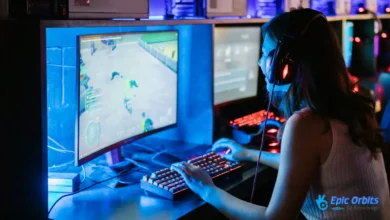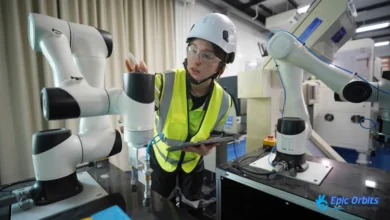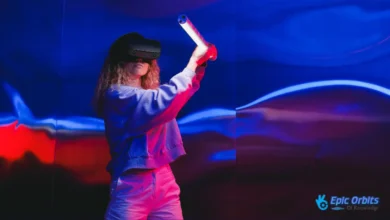The Rise of Foldable Smartphones and Their Future
Get the latest roundup of foldable smartphones, including specs, reviews, and comparisons to help you make an informed purchase decision.
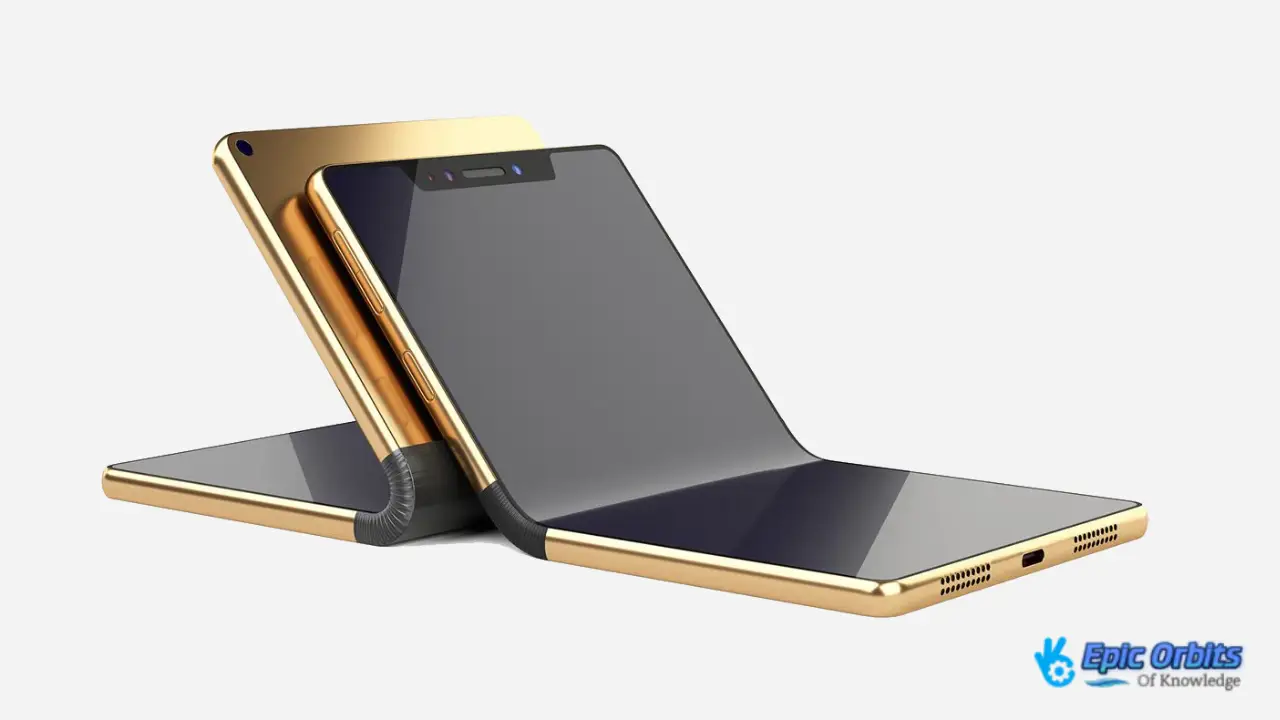
Foldable technology has changed the smartphone business in a big way. Foldable phones have gone from being fringe experimental gadgets to popular consumer items in only a few years.
Samsung, Motorola, and Google are some of the biggest names in the business that have pushed the limits of folding screen technology. These phones have several benefits over regular smartphones, including more screen space and new shapes.
The History of Foldable Phones
Since their initial conception as prototypes, foldable cellphones have advanced significantly. Now they are ready for sale. These technologies have gone from being just fun to use to becoming important elements of our everyday lives in the last few years.
There have been big technical achievements along the way for foldable phones, especially in hinge mechanics and flexible display technologies. Early idea devices had many drawbacks, such as screens that broke easily and designs that were too big, but manufacturers swiftly changed their designs to fix these shortcomings.
It's remarkable how swiftly foldable cellphones transitioned from experimental devices to mainstream usage. People criticized the early versions for their quality control issues and easily breaking screens. But big improvements in technology have made it possible to make gadgets that last longer and are easier to use.
The amount of money that companies are putting into folding display technology has gone up quickly, and big companies are vying to improve their methods. Because of this, foldable smartphones have steadily become more durable, easier to use, and more attractive, making them really usable gadgets.
The progress is seen in the better screen resolution, new folding mechanics, and elegant designs of today's foldable phones. The future of foldable smartphones looks promising as long as manufacturers keep pushing the limits of what is feasible.
Different kinds of foldable phones
Currently, many different types of foldable cellphones are available, but two major varieties stand out as the most popular. As technology becomes better, these gadgets are growing more popular because they give customers new experiences and features.
A big part of the foldable phone industry is made up of book-style foldables. When you open these gadgets, they seem like tablets, but when you close them, they look like smartphones.
- They usually open up like a book, showing an interior screen that is almost twice as wide as a regular smartphone screen.
- The bigger inner screens, which are between 7.6 and 8.0 inches, provide you more space to work, watch videos, and do more than one thing at a time.
- Cover screens have changed into full-featured smartphone interfaces that can run most apps without having to unlock the device.
The Samsung Galaxy Z Fold series, the Google Pixel Fold Pro, and the OnePlus Open are some of the best examples of book-style foldables. Each of these devices takes a different approach to the book-style form factor, focusing on productivity and multitasking with their bigger screens.
These smartphones have advanced hinge designs that enable the displays to fold all the way flat without hurting the flexible display. This part of the design is crucial for the foldable phone's long life and durability.
“Smartphones' future is not just about size; it's also about usefulness and meeting users' needs.”
The user experience on book-style foldables is designed to make the most of the bigger screen, with particular software features that make it easier to get things done and do more than one thing at a time. As technology keeps becoming better, we should expect to find even more creative applications for the foldable design.
Different kinds of foldable phones
Foldable smartphones are changing the way we think about mobile technology by giving us a new option to standard slab phones. These new gadgets come in a range of shapes and sizes, each designed to meet the requirements and wants of individual users.
Flip-style foldables are a new take on the traditional clamshell design. When not in use, they fold vertically to make a small shape. The Samsung Galaxy Z Flip6 and Motorola Razr+ are two devices that have become popular because they look good and work well.
- Most of these devices include a tiny screen on the outside for alerts, quick actions, and previews of selfies. The screen sizes range from 1.4 to 4.0 inches, depending on the model.
- When you open a flip phone, you see a standard-sized smartphone screen, usually between 6.7 and 6.9 inches, which gives you a familiar experience without the heft of a regular phone.
- People who want to take their foldable devices with them will love the flip-style foldables because they easily fit into tiny pockets or bags when not in use.
- Over the years, flip phone makers have made the hinges and screens far more durable. Some models can be folded hundreds of thousands of times during their lifespan.
Flip-style foldables have significantly improved their external displays. They used to be little notification screens, but now they can run whole applications without opening the device, which saves time and power. This improvement has made flip-style foldables quite popular with content makers, who can use the folded shape as a built-in stand for video chats or capturing videos without using their hands.
As manufacturing methods become better, the displays on newer flip phones have gotten more robust, and the creases are less visible with each new iteration. This advancement has made flip-style foldables more popular in the market.
1. Samsung Galaxy Z Fold 6
The Samsung Galaxy Z Fold6 is the newest version of Samsung's flagship folding phone. It offers many new features that make it better than previous models. This sixth-generation gadget has been improved in terms of design, display, and performance to make the user experience more seamless.
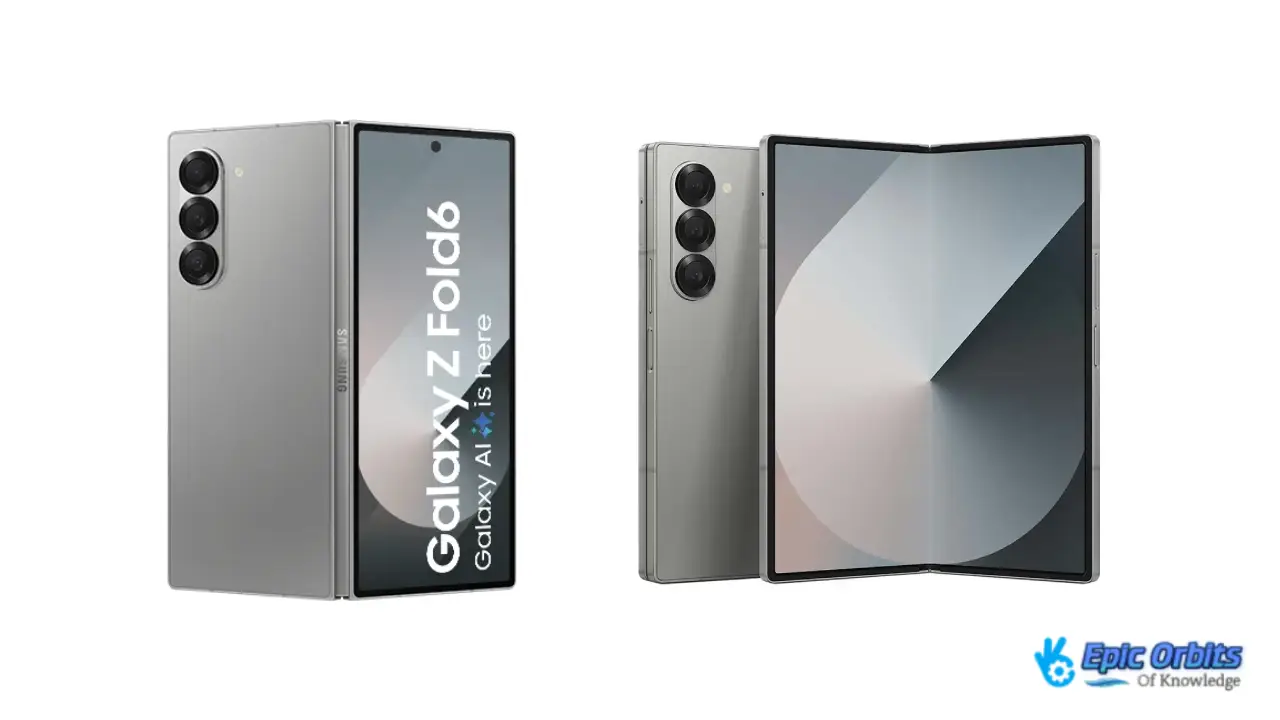
The Galaxy Z Fold6 has two excellent screens: a 7.6-inch screen on the inside and a 6.3-inch screen on the outside. With a fast Qualcomm Snapdragon 8 Gen3 engine and 12GB of RAM, it can do any job with ease. The gadget is also a productivity powerhouse thanks to software changes that let you do more than one thing at a time.
The Samsung Galaxy Z Fold6 boasts a stylish and sturdy design. It sports a 7.6-inch Dynamic AMOLED 2X primary display and a 6.3-inch cover screen. Both panels can refresh at 120 Hz, which makes scrolling and animations seamless.
The design of the item is not just about how it looks; it's also about how it works. The broader cover screen makes it easier to use the phone while it's closed, and the main display offers a big space for doing many things at once and having fun.
- The Samsung Galaxy Z Fold6 is the sixth iteration of Samsung's top-of-the-line book-style foldable phone. It has several improvements over earlier generations.
- The Galaxy Z Fold6 is slimmer and lighter than its predecessors. The cover screen is also bigger, which makes it easier to operate the phone while it's folded.
- The gadget has a 7.6-inch Dynamic AMOLED 2X main display with a resolution of 2160 x 1856 and a 6.3-inch cover screen. Both screens support a 120 Hz refresh rate, which makes scrolling and animations seamless.
- The Snapdragon 8 Gen 3 CPU, 12GB of RAM, and storage choices up to 1TB make this handset a truly flagship gadget with amazing performance.
- Testing has shown that the battery life has increased to around 11.5 hours, and the device supports 25W wired charging, which helps keep the power under control.
The Samsung Galaxy Z Fold6 is a high-end phone that is worth the money since it offers many features, including compatibility for the S Pen pen, the latest 5G and Wi-Fi radios, and outstanding photography capabilities. It has a 50MP primary sensor, a 12MP ultrawide sensor, and a 10MP telephoto lens with 3x optical zoom, so it takes excellent photos and videos in most lighting circumstances.
2. Motorola Razr Ultra 2025
With the Razr Ultra 2025, Motorola demonstrates its commitment to innovation in the smartphone business. This new foldable phone has many high-tech features that make it a truly flagship smartphone.
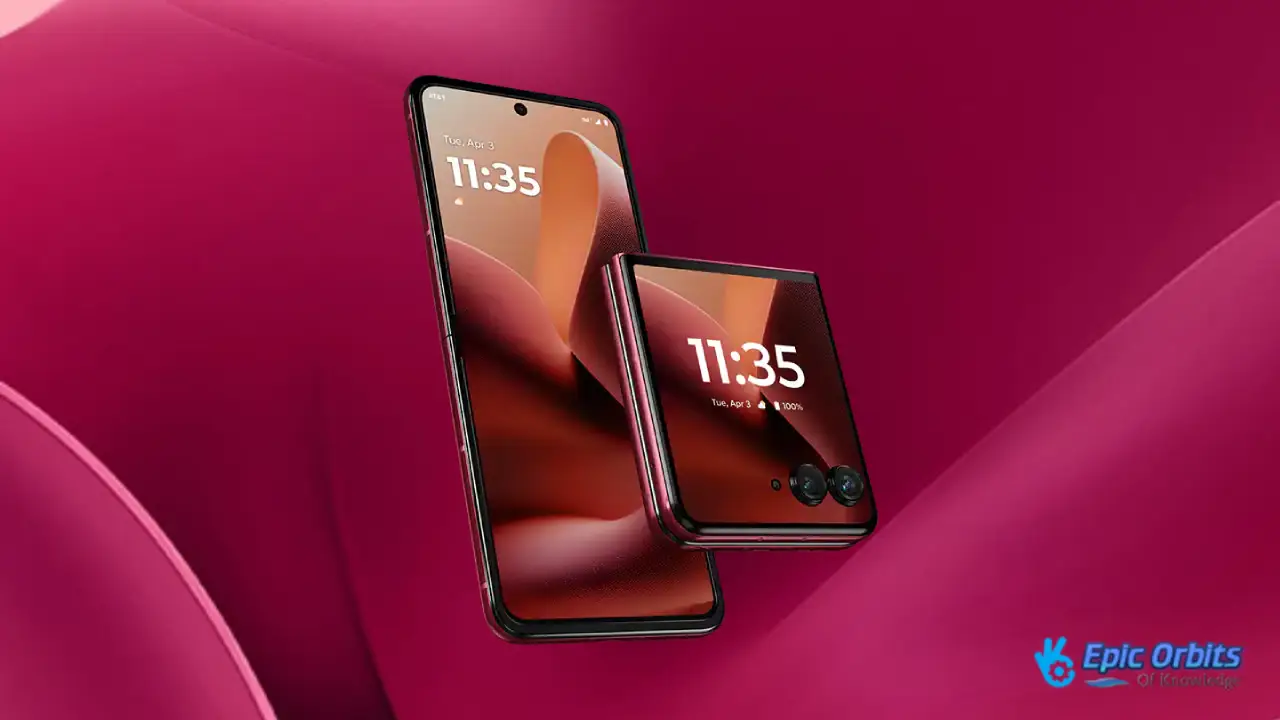
The Motorola Razr Ultra 2025 has a high-end design, and its hinge is strengthened with titanium to make it last longer. The phone's flip design is both elegant and useful. It boasts a huge 4-inch external display with a resolution of 1272 x 1080. This is the biggest cover screen on any flip-style foldable. It lets users run complete applications without opening the device.
The 7-inch pOLED display inside has a resolution of 2992 x 1224 and a refresh rate of 165 Hz, which makes for an immersive viewing experience with bright colors and dark blacks. The screen is a big improvement over older versions, making it ideal for viewing films, playing games, and doing more than one thing at once.
With the newest Snapdragon 8 Elite chipset, 16GB of RAM, and 512GB of storage, the Razr Ultra 2025 is a real top challenger in the market. The phone works well and can do tough jobs without any trouble.
The battery life is wonderful since it has a huge 4,700 mAh battery, which is the biggest in any flip phone. Tests have revealed that it lasts more than 14 hours and can charge quickly at 45W and wirelessly at 15W. This implies that customers may use their gadget for a long time without worrying about running out of battery.
The camera system has been changed to have a more reasonable dual-camera layout, with a 50MP primary sensor and a 50MP ultrawide lens. The new setup replaces the telephoto lens from older versions, but it makes the camera more useful in general.
Motorola has also made the software experience much better by adding Moto AI capabilities that make the most of the folding form factor. But the gadget only gets software updates for three years, which is shorter than some of its rivals.
3. OnePlus Open
The OnePlus Open is a big deal in the world of foldable phones since it has many different functions. It's lighter than the Pixel Pro Fold and Z Fold5, and it's in between the two in size.
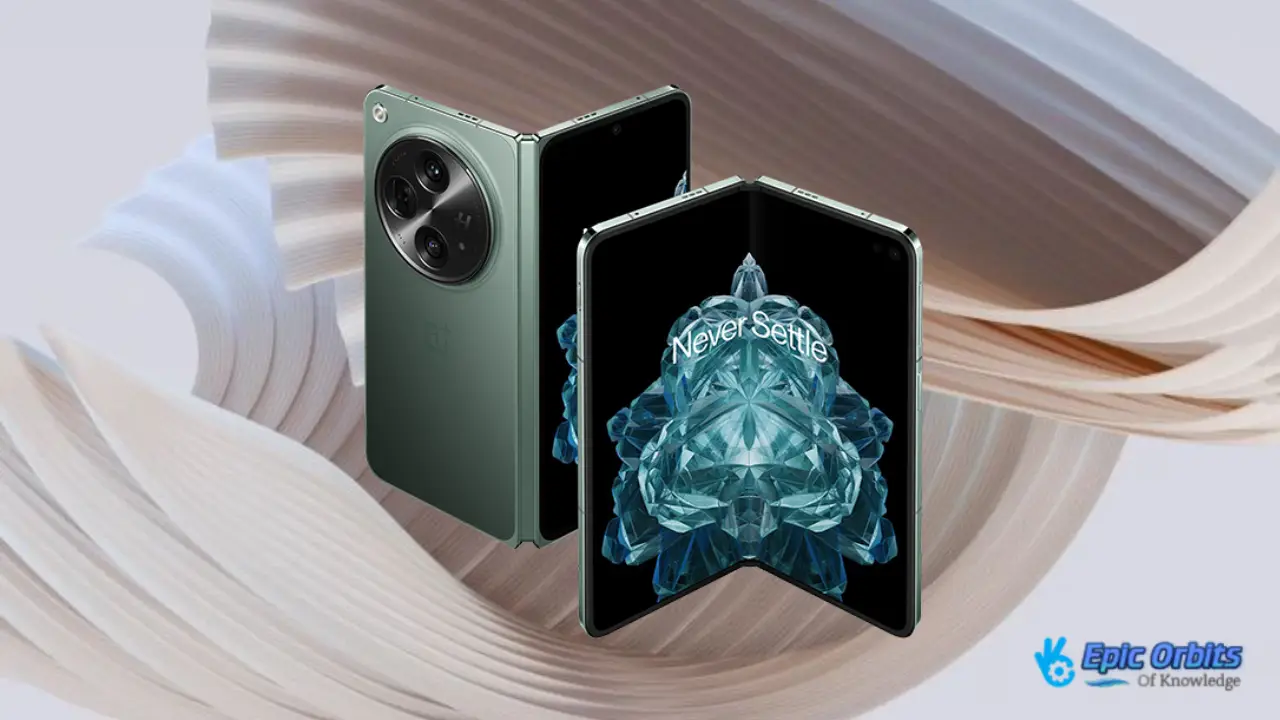
With a 6.3-inch exterior display and a huge 7.8-inch inside display, this tablet is one of the biggest in its class. OnePlus has also improved its software for multitasking, making the home screen seem better.
The OnePlus Open is well-designed, measuring just 5.8 mm when open and weighing 8.4 ounces. The 7.8-inch screen on the inside has a resolution of 2440 x 2268, while the 6.3-inch cover display on the outside seems like a regular smartphone.
The Qualcomm Snapdragon 8 Gen 2 CPU, 16GB of RAM, and up to 512GB of storage make this phone work quite well. The battery lasts a long time, around 10 hours of continuous usage, and it charges quickly with 67W SUPERVOOC.
The camera system, which was developed in collaboration with Hasselblad, has a 48MP primary sensor, a 64MP telephoto lens with 3x optical zoom, and a 48MP ultrawide lens. The camera quality is outstanding overall, but the low-light performance is just acceptable.
OxygenOS from OnePlus has remarkable multitasking capabilities, and “Open Canvas” is one of the greatest on any foldable phone. Compared to other phones like the Pixel Fold Pro, the OnePlus Open has higher build quality and display technology, making it a better physical experience.
4. Google Pixel 9 Pro Fold
The Pixel 9 Pro Fold is Google's newest foldable phone. It promises to change the way we use our phones forever. The Pixel 9 Pro Fold is a big step forward over Google's original folding phone. It has a better design that makes it smaller, lighter, and more robust.
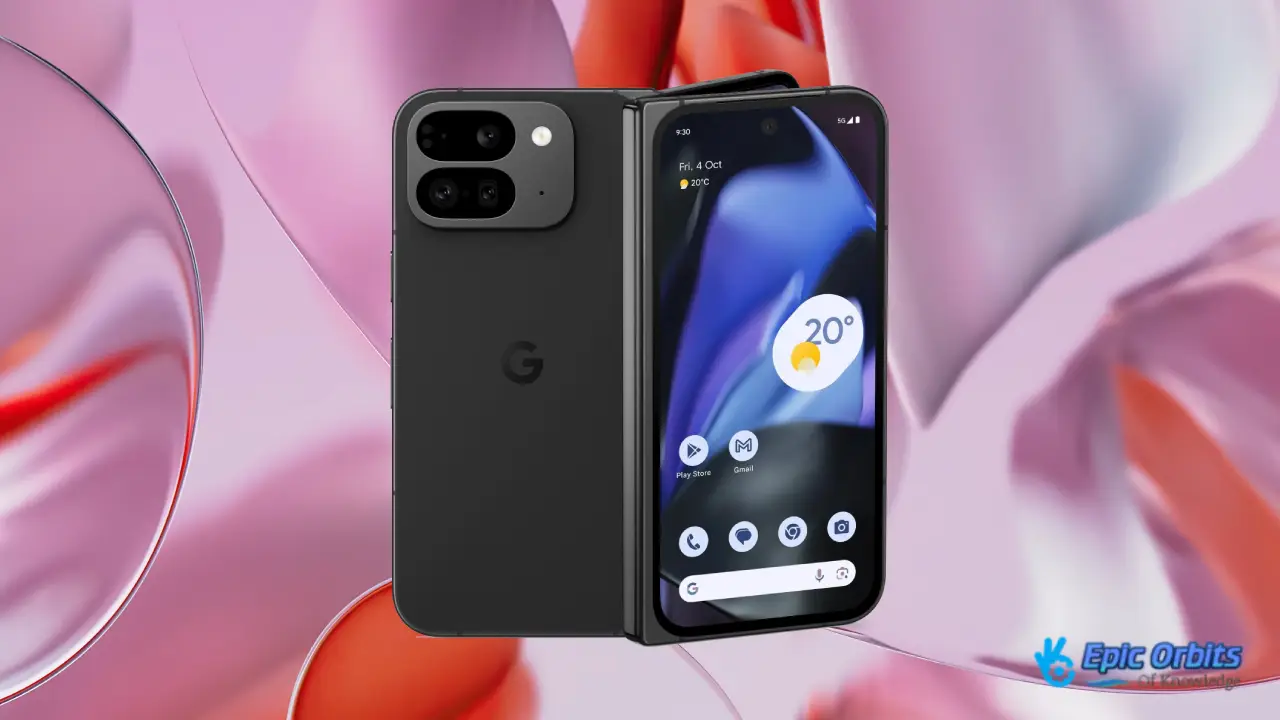
The gadget has a fantastic 8-inch inner display with a resolution of 2076 x 2152 and a 6.3-inch outside screen. Both screens have a refresh rate of 120 Hz, which makes scrolling smooth and touch input snappy. Testing showed that the display is also the brightest on any foldable phone, hitting an amazing 2,319 nits. This feature makes it easy to see even in direct sunshine.
The Google Pixel 9 Pro Fold has a new 6.3-inch outside display and a redesigned 8.0-inch inside screen, both of which look great. The excellent quality and seamless refresh rate of the inner screen make reading and doing more than one thing at once seem natural.
The camera works well since it has a 48MP primary sensor, a 10.5MP ultrawide lens, and a 10.8MP telephoto lens. Google's computational photography makes images seem better than most other foldable phones. The Tensor G4 CPU works well for ordinary operations, but it doesn't quite equal the benchmark results of Snapdragon-powered handsets from Samsung Galaxy and other brands.
The battery life is excellent, lasting around 11 hours of continuous usage. It can charge at 30W wired and wirelessly. Google's software is outstanding because it has AI functions that work well with the foldable form factor. These include better picture editing tools, live translation, and transcription features that make use of the bigger displays.
The Pixel 9 Pro Fold is excellent at doing more than one thing at once since it has easy-to-use split-screen features and apps that work on both the inside and outside screens. It doesn't have as many productivity capabilities as Samsung's Z Fold6, but it does have superior cameras and Google's Gemini Live as a personal assistant.
5. Samsung Galaxy Z Flip 6
The Galaxy Z Flip6 is Samsung's sixth-generation flip phone and comes with a lot of improvements and new features. The newest version of Samsung's iconic flip-style foldable phone series has a better design that folds entirely flat with no gap. This enhancement makes it look better and last longer.
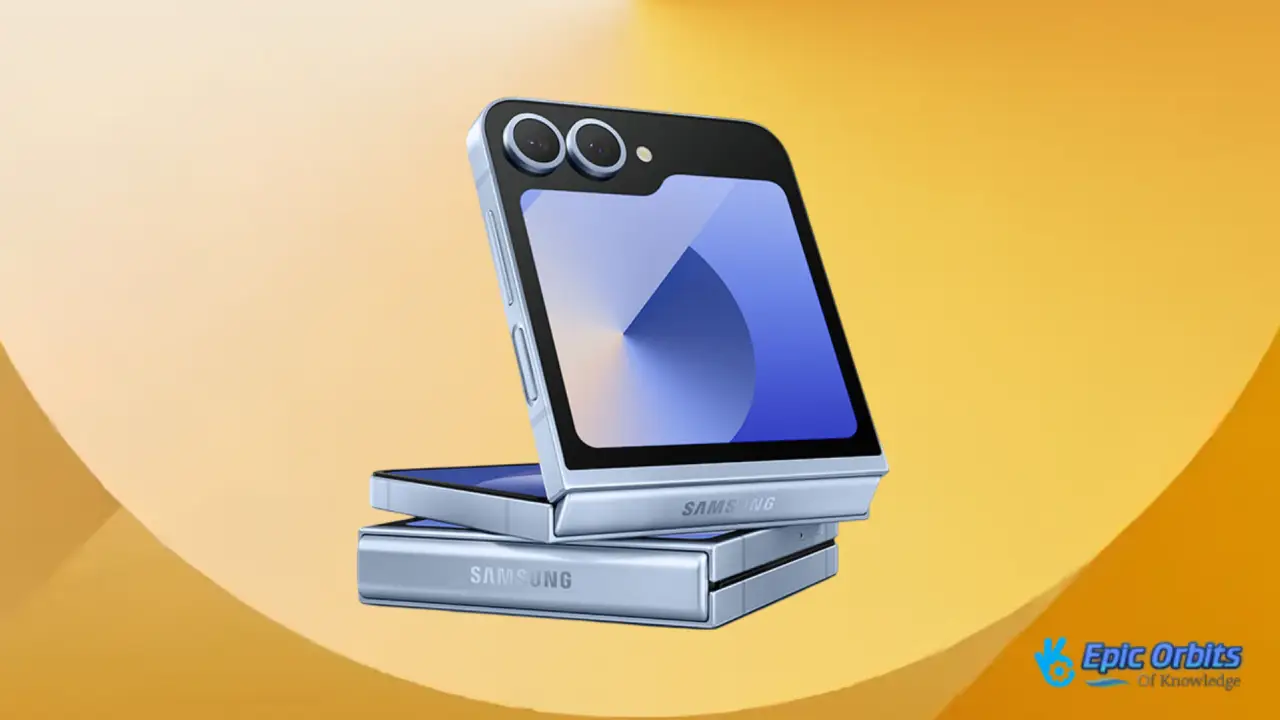
The Galaxy Z Flip6 has a 6.7-inch Dynamic AMOLED 2X primary display with a resolution of 2640 x 1080 and a refresh rate of 120 Hz, which makes colors pop and scrolling smooth. The smartphone also boasts an exterior 3.4-inch Super AMOLED display that has been improved so that users can access widgets, alerts, and quick settings without having to open the phone.
The Galaxy Z Flip6 looks good and works well. The phone's ability to fold without a gap makes it seem better and makes it last longer. The 6.7-inch screen inside gives you the entire Samsung Galaxy experience, while the screen outside makes it easy to remain up-to-date.
The camera of the Galaxy Z Flip6 works much better now that it has a new 50MP primary sensor and a 12MP ultrawide lens. This update lets the gadget take high-quality pictures, including 2x optical-quality zoom photographs. The phone also has AI-assisted picture editing tools that make the photography experience even better.
Another excellent thing about the Galaxy Z Flip6 is its battery life. Tests showed that it could be used for more than 16 hours. The device may be charged with a cable connection at 25W or wirelessly, so it's simple to keep the phone charged all day. The Z Flip6 also has a better IP48 certification, which means it can handle being submerged in water and is only somewhat resistant to dust.
The Galaxy Z Flip6's One UI software incorporates features specifically designed for its flip shape. Flex Mode transforms the phone into a tripod, enabling hands-free photography and video recording. The Qualcomm Snapdragon 8 Gen 3 engine powers the Galaxy AI capabilities on the handset, which improve picture editing, real-time translation, and other smart tasks.
6. Motorola Razr 2024
With the Razr 2024, Motorola has once again pushed the limits of innovation by making a phone that is both stylish and useful. The Motorola Razr 2024 is a big step forward in the flip phone industry. It offers many features that will appeal to both tech lovers and regular consumers.
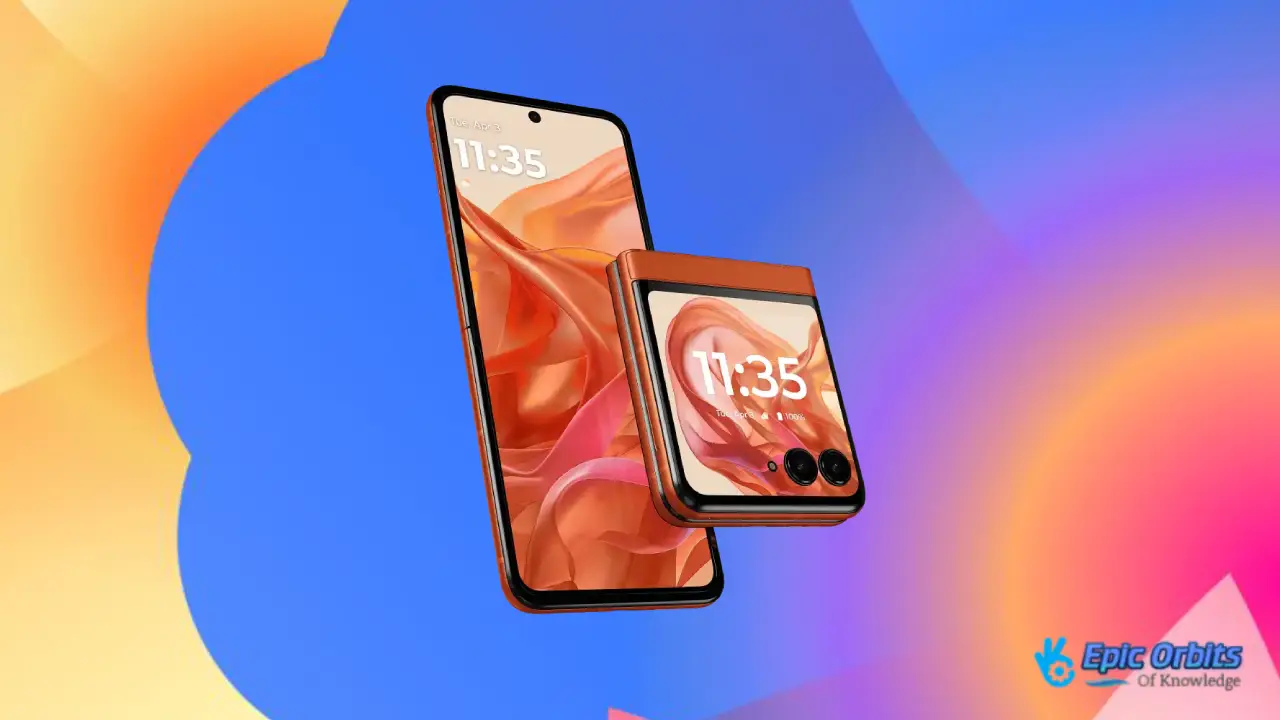
The Razr 2024 boasts a large 6.9-inch internal display that seamlessly integrates into its compact chassis. The 3.6-inch outside screen isn't just for show; it lets users run entire programs and effortlessly compose selfies with the 50MP camera. This makes it a useful tool for both photography and app use.
The 6.9-inch pOLED display inside has a resolution of 2640 x 1080 and a refresh rate of 144 Hz, which makes scrolling and gaming fluid and snappy. The camera works excellently for the price. The primary sensor is 50MP, and the ultrawide lens is 13MP, and they both work well in bright light.
The battery lasts a long time, with a 4,200 mAh capacity that may last for more than 16 hours of operation. The tablet also supports 30W TurboPower charging, which lets you charge the battery quickly. The Motorola Razr 2024 has a version of Android 14 that is almost stock and has very little bloatware, which makes it easy to use.
The flip shape lets you do creative things with the camera, like use the primary cameras to take high-quality selfies with the outside screen as a viewfinder and the folded phone as its tripod to take steady images. Even though it has a less expensive MediaTek Dimensity 7300X chipset, the phone runs well for regular work and light gaming.
7. Budget-Friendly Options: Nubia Flip 5G
The Nubia Flip 5G is making foldable phones more affordable for a larger range of people for only $499.
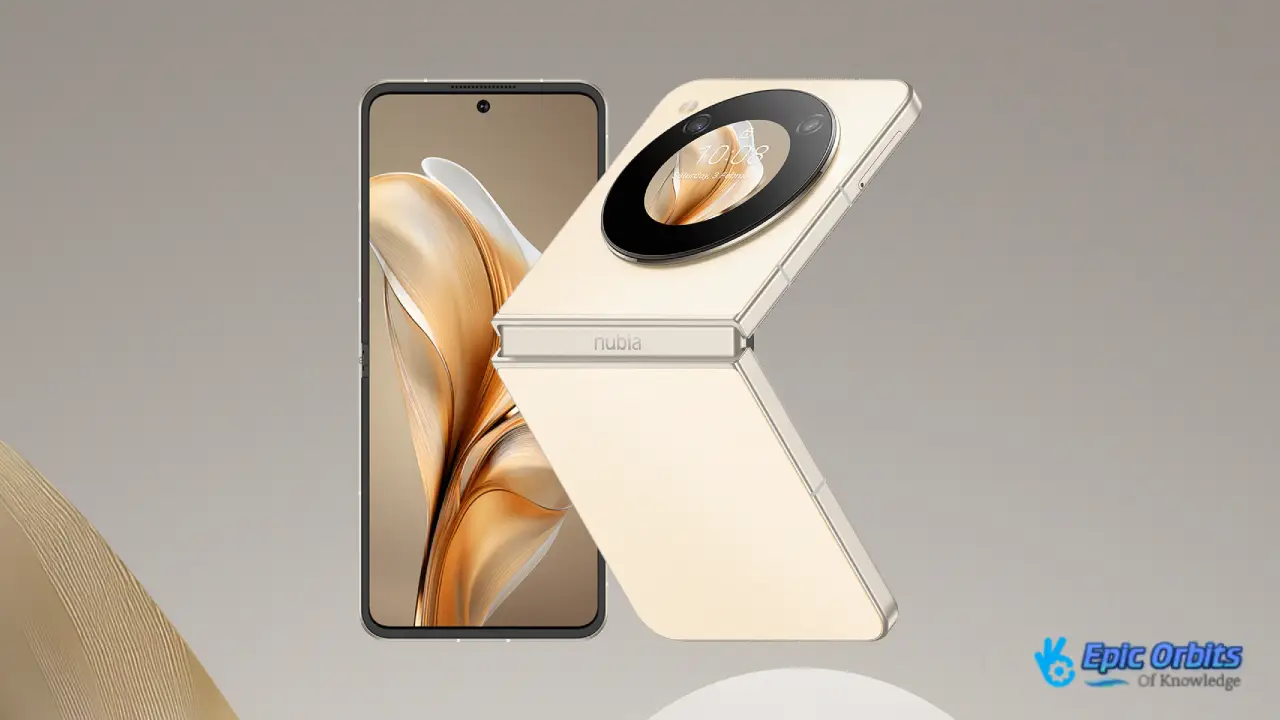
The Nubia Flip 5G is the cheapest foldable phone on the market. It costs a lot less than high-end counterparts from Samsung and Motorola. It has a lovely design and a distinctive circular 1.4-inch external display, even if it is cheap.
The gadget has a 2790 x 1188 resolution AMOLED display on the inside that is 6.9 inches wide and has excellent picture quality. The Nubia Flip 5G has a Snapdragon 7 Gen 1 CPU and either 8 GB or 12 GB of RAM. Its hardware gives it adequate performance for regular chores.
The camera isn't excellent; it has a dual-camera system with a 50MP primary sensor and a 2MP depth sensor. The battery is decent at 4,310 mAh, and the fact that it can charge quickly at 33 W helps make up for its shortcomings.
8. International Models: Oppo Find N5 and Xiaomi Mix Fold
The Oppo Find N5 and Xiaomi Mix Fold are two examples of international foldable phones that are changing the smartphone market. The Oppo Find N5 is especially impressive because of its unique style and high-tech features.
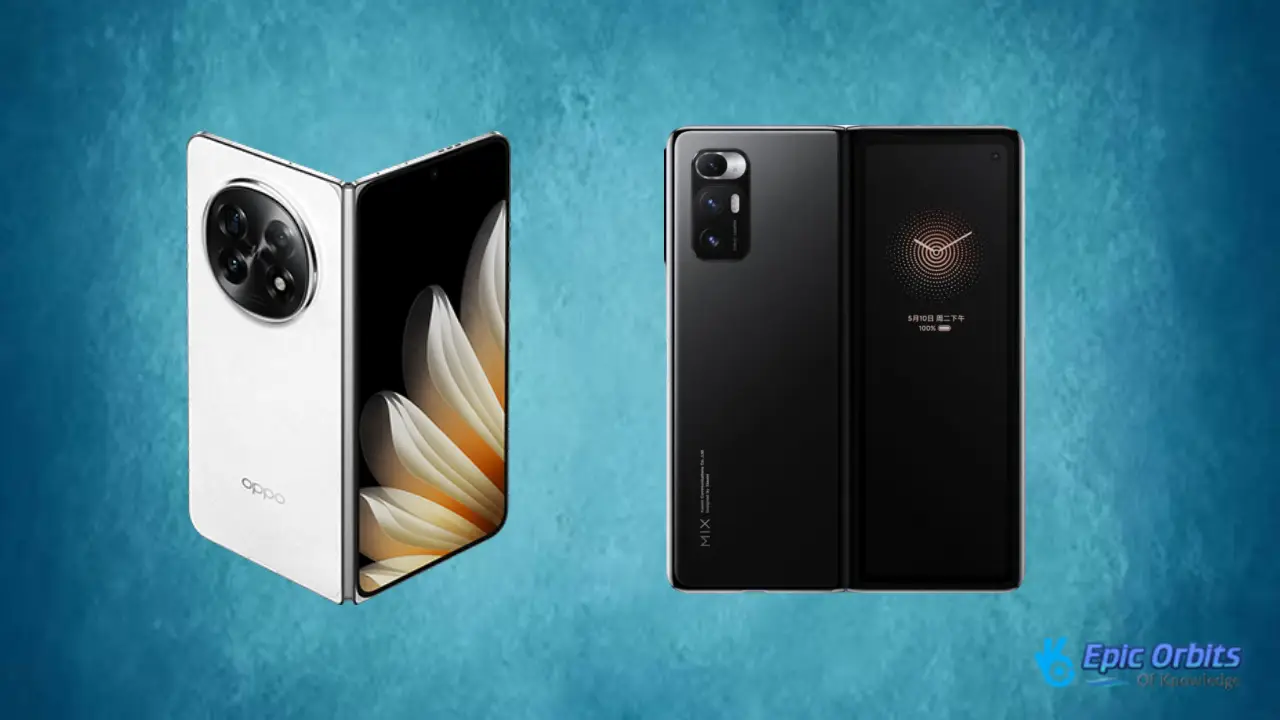
The Oppo Find N5 is an amazing piece of contemporary engineering. When opened, it is just 4.21 mm thick. The 8.12-inch inner OLED panel and 6.62-inch outside screen provide you a fantastic viewing experience with bright, accurate colors.
With the newest Snapdragon 8 Elite CPU, 16GB of RAM, and 512GB of storage, this foldable phone is one of the most powerful on the market. The camera system, which was developed in collaboration with Hasselblad, has a 50MP primary sensor, a 50MP telephoto lens with 3x optical zoom, and an 8MP ultrawide lens, giving it outstanding photography capability.
The Oppo Find N5 also has a long battery life. Its 5,600 mAh battery and 80 W wired fast charging can completely charge the handset in around 30 minutes. The ColorOS software on the phone may not be as easy to use as other Android versions, but the phone's physical specs make it a great option for a foldable phone.
Foldable smartphones are becoming more popular throughout the world, and companies like Oppo and Xiaomi are making new models that are different from the others. People are talking about Oppo's Find N5 because it looks so good, but Xiaomi's Mix Fold series has also come a long way.
The Mix Fold4 from Xiaomi is a big step forward in the company's book-style folding range. It costs $1,399. Xiaomi's product was first sold in China, and they plan to sell it elsewhere, but not in the US.
- The Xiaomi Mix Fold4 has a thin design and a complex hinge system that lets it fold without any gaps.
- It has a big screen inside, but the fold is more noticeable than on other phones like the Samsung Galaxy Z Fold6 or Pixel Fold Pro.
- Xiaomi worked with Leica to develop the camera system, which gives it outstanding photography powers.
- The battery life and performance are excellent, and it supports both wired and wireless charging quickly.
- Xiaomi is now in the flip-style foldable market with the Mix Flip. It uses Xiaomi's hardware knowledge in a small package.
Both smartphones use MIUI, Xiaomi's own version of Android, which lets you customize many things. But they may not get as many years of software support as smartphones like Google or Samsung. These gadgets still have a problem with limited availability throughout the world.
How long and how well do foldable smartphones last?
Consumers are quite concerned about how long foldable devices will last, and the hinge mechanism might be a weak spot. As these gadgets grow more common, both makers and consumers need to know how long they will last.
Foldable cellphones have a built-in flaw because of their hinges. Moving parts may break, and even if hinges are very well made, they will still wear down over time. Samsung says its Z Fold6 and Z Flip6 can last through 200,000 folds, while Motorola says its Razr+ can last through 400,000 folds. In real life, 200,000 folds means around 100 folds per day for more than five years.
Modern foldable phones have advanced hinge designs that spread pressure uniformly over the folding display. This lowers stress and makes the screen last longer. The cover displays of flip-style phones help them last longer by making it less likely that users will have to open the phone, which keeps the folding mechanism from breaking.
Software improvements are also crucial for longevity. Manufacturers include features that make it easier for people to do quick chores on the external display without having to unlock the device. We have improved the way applications switch between screens to eliminate any lag when transitioning from the cover screen to the main display. For example, the hinge design of the Google Pixel 9 Pro Fold is better than that of the previous model, but Google hasn't said how durable it is.
Video playback and picture editing are becoming more and more suited for foldable smartphones, which means that users may fully enjoy these devices' unique features without sacrificing durability. As foldable smartphones become better, their durability and extended life will still be important parts of the entire user experience.
As foldable cellphones grow more common, people are starting to worry about how well they can handle water and dust. Adding hinges to these devices has made it harder to get complete dustproof and waterproof certifications, which is something that classic smartphones have done with IP68 ratings.
Even with these problems, manufacturers have made a lot of progress. For example, the Samsung Galaxy Z Flip6 has an IP48 certification, which means it can be submerged in water and is resistant to dust. T The Motorola Razr series also has an IPX8 certification, indicating that it is quite water-resistant; however, it still requires protection from dust.
Resistant to Dust and Water
The hinge mechanism's technical problems have made it necessary for manufacturers to give up some dust protection, which might shorten the life of the gadget. Like other high-end foldable phones, Google's Pixel Fold Pro is rated IPX8 for water resistance, but it lacks certified dust protection.
- The Samsung Galaxy Z Flip6 has an IP48 certification, indicating that it can protect against objects larger than 1 mm and can only be submerged for a limited duration.
- The Motorola Razr+ is rated IPX8 for water resistance, meaning it can withstand water exposure but is not protected against dust.
- Like other high-end models, the Google Pixel Fold Pro is also rated IPX8 for water resistance.
| Device | Water Resistance Rating | Dust Resistance Rating |
| Samsung Galaxy Z Flip6 | IP48 | Limited |
| Motorola Razr+ | IPX8 | Not Rated |
| Google Pixel Pro Fold | IPX8 | Not Rated |
Despite significant progress, the search for foldable cellphones with IP68 certifications continues. To make these new gadgets last longer, manufacturers are trying to improve their resistance to water and dust.
Software Experience on Smartphones That Fold
The software experience on foldable smartphones has become a key factor that sets them apart in the market. The way people use their smartphones is changing a lot as manufacturers are coming up with new ideas and improving their old ones.
One of the best things about foldable smartphones, especially book-style ones, is that they can do more than one thing at a time. Like Android tablets, these phones have big displays on the inside that may be both helpful and difficult.
Different companies have taken different steps to improve multitasking on their foldable smartphones. For example, the Google Pixel Fold Pro lets users operate two applications at the same time on the inner screen, along with a video window that floats. Samsung's One UI, on the other hand, lets users tile up to three programs, run a video player on top of them, and see additional apps in a pop-up view.
- One of the best things about foldable cellphones is that they can do more than one thing at once, especially book-style ones with tablet-sized screens inside.
- Samsung's way of multitasking on the Galaxy Z Fold series lets users run up to three applications at once in split-screen mode. Floating windows also let users run more programs.
- The Google Pixel Fold Pro makes multitasking easier by letting you use split-screen mode and a taskbar that makes it easier to navigate between programs.
- People have praised OnePlus's “Open Canvas” multitasking interface as one of the easiest to use on any foldable handset.
- Motorola Razr phones have changed multitasking to work with the flip form factor. This lets users run various programs on the top and bottom portions of the screen while the phone is partly folded.
Foldable smartphones can do many things at once, but they still have trouble with app compatibility. Many third-party apps don't work well with these devices' weird screen sizes and folding features.
Foldable cellphones have a unique design that requires software that can fully use their features. As these devices become more popular, makers are working hard to improve their software for a better user experience.
One of the biggest problems with such devices is making apps work well on foldable screens. Various phone makers deal with this problem in different ways. For example, Motorola's Razr+ lets you run practically any program on its front screen, but it warns you that certain apps may not work with it. Samsung, on the other hand, only lets a few applications use the Flip6's outside screen.
Making Apps Work Better on Foldable Screens
App optimization is still a big problem for software developers since they have to make sure their apps work on devices with different screen sizes and aspect ratios. Google has worked with big app makers to come up with the best ways to optimize for foldable devices, but not all Android devices use them.
- Many popular social media applications, including Instagram and TikTok, have made it easier for foldable displays to work with them. However, on bigger inner panels, they still have problems with letterboxing and scaling.
- Microsoft's Office suite and Google's Workspace applications are examples of productivity apps that work better on foldable devices because they can use the extra screen area.
- Foldable phones may change the way you play games. For example, PUBG Mobile and Genshin Impact have bigger interior screens that give you more control and perspectives.
As foldable phones become more popular, developers are more likely to make their applications work better on this type of phone. This tendency should speed up in the next few years. The software on foldable devices will keep getting better, giving customers a smoother and more efficient experience.
As foldable cellphones become better, their software features are becoming more and more advanced. Companies are designing particular features that work with the distinctive shapes of these gadgets.
The incorporation of AI functions is one of the most important things that set foldable phones apart from each other. The Galaxy AI suite in the Z Fold and Z Flip series has capabilities like Circle to Search, Live Translate, and Note Assist that work best on the bigger screens. In the same way, Google's Pixel Fold Pro uses AI knowledge to provide unique capabilities like Magic Editor for photographs, which takes advantage of the bigger inner display to make editing more accurate.
Foldable Phones with AI Features
AI functions are becoming a vital part of using a foldable phone. Moto AI capabilities have been added to Motorola Razr handsets to make them more useful for the flip form factor. AI-powered multitasking assistants propose app combinations based on how users use their phones and what they're doing right now to help them get the most done on foldable phones.
| Device | AI Features | Multitasking Capabilities |
| Samsung Galaxy Z Fold | Circle to Search, Live Translate, Note Assist | Enhanced multitasking with AI suggestions |
| Google Pixel Pro Fold | Magic Editor, AI-driven photo editing | Seamless multitasking with AI assistance |
| Motorola Razr | Moto AI features for flip form factor | AI-powered app suggestions |
As AI becomes better, foldable phones will probably have even more specialized functions that make use of their distinctive shape and numerous screens. The future of foldable smartphones depends a lot on the creation of new software that makes them easier to use.
Value Proposition and Price Comparison
The Samsung Galaxy Z Fold6 and Google Pixel Fold Pro are two of the best folding smartphones on the market right now. They are pushing the limits of what mobile technology can do. These high-end smartphones include many new features that make their expensive pricing worth it.
Premium foldable cellphones represent the height of innovation in the electronics sector. The Samsung Galaxy Z Fold6, Google Pixel Fold Pro, and OnePlus Open all cost between $1,700 and $2,000. For example, the Samsung Galaxy Z Fold6 begins at $1,899 and comes with a lot of foldable-friendly applications and accessories, such as S Pen compatibility and DeX desktop mode.
These high-end handsets include the newest Snapdragon CPUs, 12 to 16 GB of RAM, and storage choices that go up to 1 TB. The Google Pixel Fold Pro costs $1,799 and is a great pick for photography fans since it has great camera quality and AI functions.
- High-end foldables have improved color accuracy and higher brightness levels because of sophisticated display technology.
- The battery life is different for each device. Some can stay on for 10 to 12 hours, while others can charge at speeds between 25W and 67W.
- Software support policies vary; Samsung and Google provide seven years of upgrades, whereas most other manufacturers typically offer three to four years.
As the flagship sector becomes more competitive, manufacturers are introducing distinguishing features, like specialized multitasking interfaces and AI capabilities, to differentiate their goods.
Value Proposition and Price Comparison
The mid-range segment of foldable phones has become quite popular since it provides people with a cheaper way to enter the realm of flexible screens. This group has grown in importance since it connects high-end foldable gadgets with those who want to save money.
Mid-range foldable phones, which cost between $700 and $1,000, include many of the same features as high-end models. The Samsung Galaxy Z Flip6 and Motorola's Razr+ 2024 are two instances that stand out. They both cost $999. The Z Flip6 has flagship-level performance in a small flip-style body. The Razr+ 2024, on the other hand, has a bigger outside screen and a longer battery life.
These mid-range choices usually keep the same high-quality construction and strong hinges. But they typically have to give up things like camera quality, CPU speed, or charging speed. Even with these trade-offs, many people find mid-range foldables to be a beneficial choice.
| Model | Price | Display | Battery Life | Charging Speed |
| Samsung Galaxy Z Flip6 | $999 | 6.7-inch Dynamic AMOLED | Up to 12 hours | 25W Wired, 10W Wireless |
| Motorola Razr+ 2024 | $999 | 6.7-inch P-OLED, 3.6-inch external | Up to 14 hours | 30W Wired, 15W Wireless |
Battery life has become a lot better in this area, and most smartphones can now last a full day of moderate to heavy usage. The display technology of mid-range foldables is frequently the same as that of premium foldables, with the primary variations being in the hardware and functions that enable them.
For many people, mid-range foldables are the best option since they give the unique features of folding screens without the high prices. As the market changes, we should expect to see further refinements in this area.
Cheap Options
Easy on the wallet Foldable phones are gaining significant attention in the tech industry due to their affordable entry into the world of flexible screens. The Nubia Flip 5G, which costs $499, is a useful illustration of how foldable technology is becoming more widely available.
There are a lot more affordable foldable phones on the market now, such as the Motorola Razr 2024, which costs $699. These models provide a fantastic deal since they balance price and performance.
- To save money, mid-range CPUs are employed. Common chipsets include the MediaTek Dimensity and the Snapdragon 7-series.
- The display quality is still high, but the refresh rates are usually limited to 60 Hz or 90 Hz.
- The battery life is similar to that of high-end models, although the charging rates may not be as fast.
- Camera systems are a big step back since they have fewer lenses and less advanced picture processing.
- There are fewer years of updates and less optimization for the folding form factor; therefore, software support is less good.
Even with these problems, budget-friendly foldable phones are having a big effect by making the technology available to more people. We might expect these low-cost devices to get even better as the market evolves.
The Future of Smartphones That Fold
There are many big phone companies about to release new foldable smartphones; therefore, the future of these phones seems bright. As technology becomes better, we should anticipate significant changes in how things seem, how they work, and how people use them.
A number of big tech companies are developing foldable cellphones for the future generation. In the summer of 2025, Samsung is slated to show off the Galaxy Z Fold7 and Z Flip7. There are reports that the camera quality, battery life, and maybe even the folding mechanism will be better. Motorola Razr models are also changing quickly, and future versions will probably improve the software and external screens.
People think that Google will keep working on its Pixel Pro Fold range, focusing on camera quality and AI features. Chinese companies like Xiaomi, Oppo, and Vivo are pushing the limits of foldable design by making smartphones that are thinner and thinner. These gadgets may soon be available in markets throughout the world.
Android is becoming better at managing different screen layouts as software optimization for foldable form factors becomes better. Experts in the field say that foldable phones will continue to gain market share over the next five years as costs drop and the technology becomes more common.
New technology is on the way.
The next generation of foldable phones is going to change the way we use smartphones. As technology keeps becoming better, we should anticipate big advancements in many areas of foldable gadgets.
There are several big new ideas coming up that will resolve problems with the present system and make the user experience better overall. Display technology is changing quickly. Manufacturers are attempting to eliminate noticeable creases by using new ultra-thin glass compositions and improved lamination methods.
| Technological Advancement | Description | Expected Benefit |
| Ultra-thin Glass Formulations | New materials for foldable screens | Reduced visible creases |
| Solid-State Batteries | Advanced battery technology | Higher energy density, thinner devices |
| Improved Hinge Mechanisms | Refined hinge designs | Enhanced durability, dust resistance |
Furthermore, new battery technologies like solid-state batteries are predicted to have improved energy density, which will allow for even lower device profiles. Hinge mechanisms will continue to improve, enhancing their effectiveness in keeping out dust and either maintaining or increasing their water resistance.
Conclusion
Foldable cellphones are becoming more advanced as technology improves. The development of these gadgets has turned them from experimental ideas into well-designed, useful tools that are better than conventional form factors in many ways.
The market currently has many great choices at different price ranges. For example, the Samsung Galaxy Z Fold6 and Google Pixel Fold are high-end smartphones, while the Motorola Razr 2024 and Nubia Flip 5G are more economical possibilities. Book-style foldables are great for getting work done and watching videos, while flip-style foldables are better for being small and easy to carry.
Battery life and durability have become a lot better. Most gadgets can now survive a full day of regular usage and are water-resistant. The high price of foldable cellphones, on the other hand, keeps them from becoming popular. As technology improves and more cheap choices come out, the folding smartphone category is likely to keep changing quickly, giving users new features and experiences that aren't feasible with regular smartphone designs.
Today's foldable phones provide a unique gadget experience that combines the best features of a smartphone and a tablet for those who are prepared to try new things. It's apparent that foldable smartphones will have a big impact on the mobile industry in the future.
